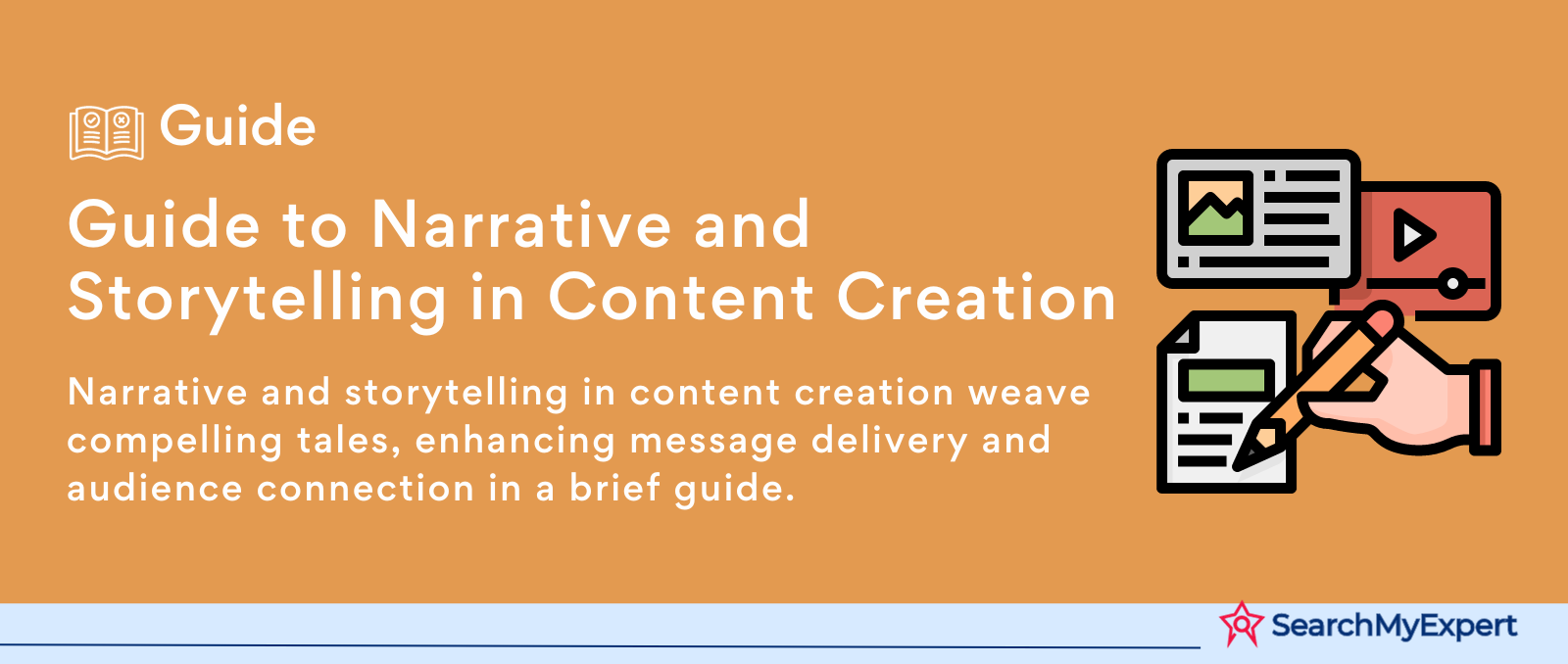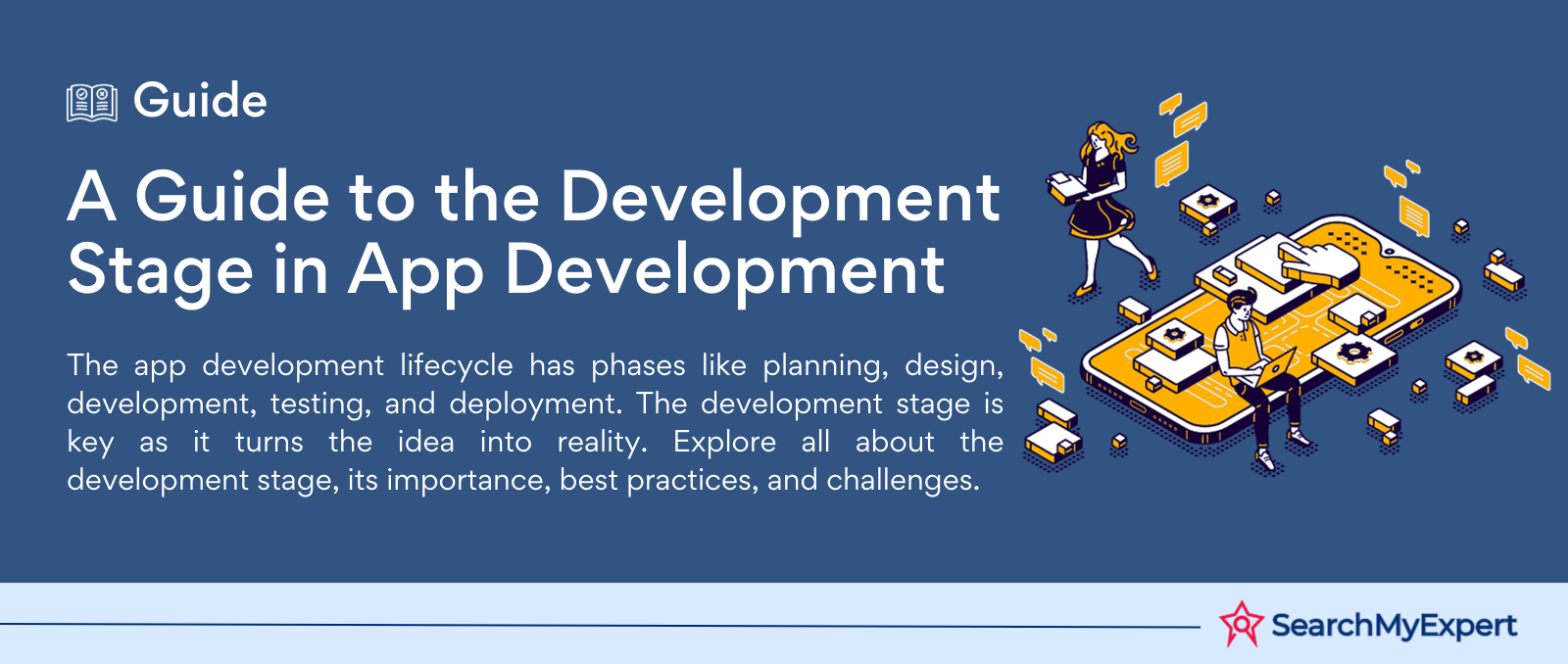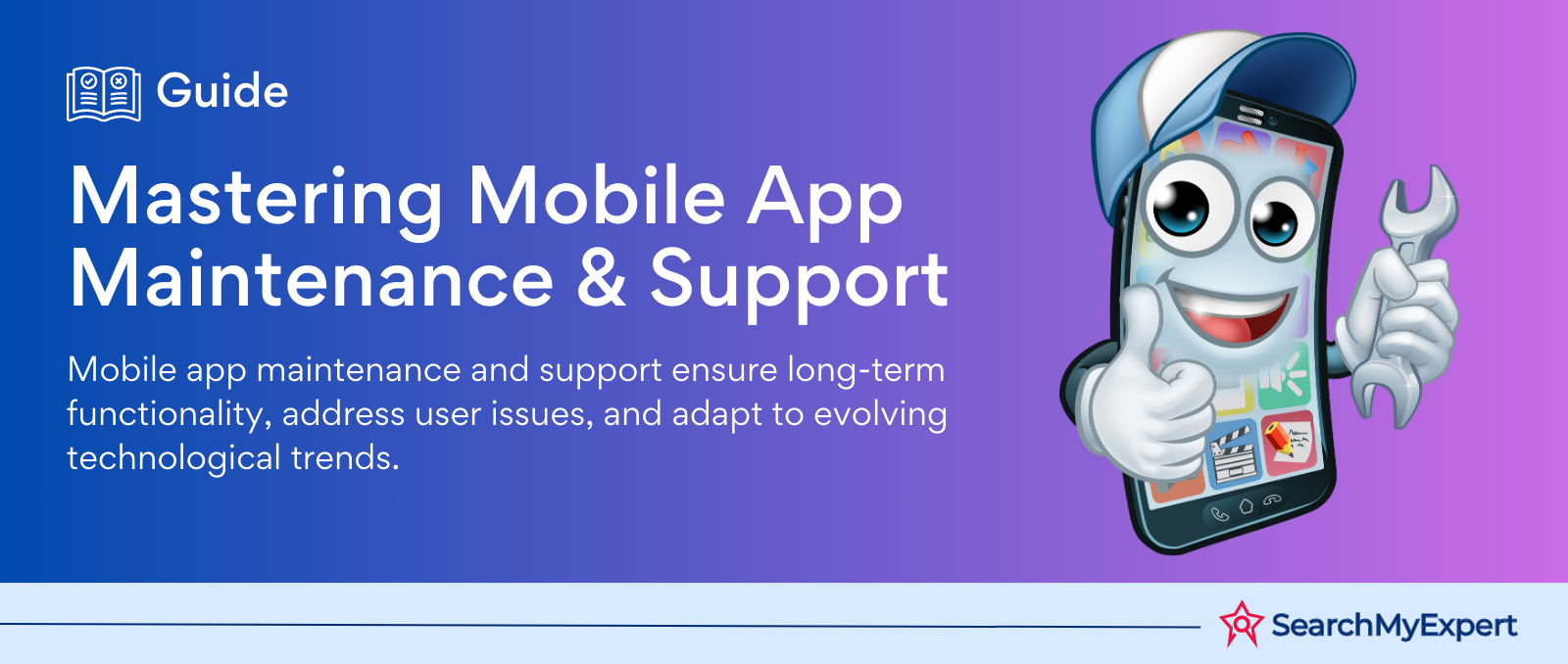Hey there, awesome visitor! 👋 Our website is currently undergoing some nifty upgrades to serve you even better. But don't worry, we'll be back before you can say "SearchMyExpert rocks!"

Narrative and Storytelling in Content Creation
Defining Narrative and Storytelling in Content Creation
Narrative and storytelling are foundational elements in the realm of content creation. A narrative is essentially the structural framework of a story - the sequence of events and experiences that are conveyed to the audience. Storytelling, on the other hand, is the art of conveying these narratives in an engaging, compelling, and often emotional manner. In the context of content creation, narrative, and storytelling go beyond mere facts or information; they weave a tapestry of ideas, emotions, and experiences that resonate deeply with audiences.
The Significance of Narrative and Storytelling in Engaging Audiences
Narrative and storytelling play a crucial role in captivating and maintaining the audience's attention. Stories have the power to connect with people on a personal level, making content more relatable and memorable. They can transform mundane information into something meaningful and engaging. This is why narratives and storytelling are key tools in content creation – they have the unique ability to turn passive readers or viewers into active participants in the story being told.
The Role of Narrative and Storytelling in Effective Communication
Narratives and storytelling are not just about entertainment; they are powerful tools for communication. They help in conveying messages in a way that is easily understandable and emotionally impactful. By presenting information through stories, content creators can make complex ideas more digestible and relatable to their audience. This makes narratives and storytelling essential for effective communication, especially in a world overloaded with information.
In the following sections, we will delve deeper into the elements of narrative storytelling, techniques for crafting captivating narratives, and strategies for adapting storytelling to various content formats. By understanding and mastering these concepts, content creators can significantly enhance the effectiveness and appeal of their content.
Understanding the Elements of Narrative Storytelling
Key Components of Narrative Storytelling
Narrative storytelling is an intricate art form composed of several critical components. These include characters, plot, setting, and conflict. Each element plays a vital role in building a compelling narrative:
- Characters: The heart of any story. Characters should be well-developed and multidimensional, allowing audiences to connect with them on a deeper level.
- Plot: This is the sequence of events that unfold in the story. A well-structured plot keeps the narrative moving forward and maintains the audience's interest.
- Setting: The backdrop against which the story unfolds. The setting can significantly influence the mood and tone of the narrative.
- Conflict: Essential for creating tension and interest in the story. Conflict can be internal (within a character) or external (between characters or against a larger force).
Importance of Character Development
Developing relatable and compelling characters is crucial in narrative storytelling. Characters serve as the audience's entry point into the story; they are the ones readers or viewers sympathize with, root for, or even love to hate. When characters are well-developed, they bring depth and authenticity to the narrative, making it more engaging and believable.
Role of Plot Structure
The plot structure is the backbone of narrative storytelling. It's not just about what happens in the story, but how and when events unfold. A well-crafted plot includes elements like exposition, rising action, climax, falling action, and resolution. This structure helps in maintaining a rhythm in the narrative, ensuring that the story is dynamic and keeps the audience engaged.
Crafting Captivating Narratives
Techniques for Creating Vivid Narratives
To create captivating narratives, it's essential to employ techniques that bring stories to life. One effective method is using vivid descriptions and sensory details. This approach involves painting a picture with words, allowing readers or viewers to visualize scenes and characters, and to immerse themselves in the story. Sensory details – those that engage the five senses – are particularly powerful, as they can evoke memories and emotions, making the narrative more relatable and memorable.
Impact of Emotional Resonance in Storytelling
Emotional resonance is at the core of effective storytelling. It refers to the ability of a story to evoke emotions in the audience, creating a deeper connection with the narrative. This can be achieved through various means, such as developing empathetic characters, incorporating universal themes, and using language that strikes an emotional chord. Stories that resonate emotionally are more likely to leave a lasting impact, as they engage not just the mind but also the heart of the audience.
Importance of Pacing and Suspense
Pacing and suspense are critical in maintaining audience interest throughout a narrative. Pacing refers to the speed at which a story unfolds, and it needs to be carefully managed to keep the audience engaged. Too fast, and the story may feel rushed; too slow, and it might drag. Suspense, on the other hand, involves creating a sense of anticipation or uncertainty, making the audience eager to know what happens next. Balancing these elements is key to crafting a narrative that captivates and retains the audience's attention from beginning to end.
In the next section, we will explore strategies for adapting these storytelling techniques to different content formats, including written content, video, and audio. Tailoring narratives to suit the specific strengths and requirements of each medium is crucial for maximizing their impact and effectiveness.
Adapting Storytelling to Different Content Formats
Strategies for Various Content Formats
Storytelling techniques can be adapted to suit different content formats, each having its unique strengths and considerations.
- Written Content: When it comes to blogs, articles, or e-books, the focus is on detailed, descriptive writing. Engaging readers through compelling narratives, vivid descriptions, and a strong voice is key. Written content allows for deeper exploration of characters and plots, making it ideal for immersive storytelling.
- Video Content: Video storytelling is highly visual and auditory. It combines imagery, dialogue, sound effects, and music to create a multi-sensory experience. Short films, documentaries, and video blogs can leverage visual storytelling to create a more immediate and emotional impact.
- Audio Content: Podcasts and audiobooks rely on voice, tone, and soundscapes to tell a story. The absence of visual elements means that the narrative must be exceptionally strong and the characters well-defined to keep the audience engaged purely through audio.
Nuances of Storytelling in Different Mediums
Each medium has its own nuances in terms of storytelling:
- Written Content: It's essential to engage the reader's imagination, using words to create mental images. The narrative should be compelling enough to keep the reader turning pages or scrolling down.
- Video Content: Visual storytelling hinges on the power of images and movement. The narrative should be concise and powerful, with visuals and sound working together to convey the story effectively.
- Audio Content: The tone, pace, and inflection of the narrator's voice play a significant role. Sound effects and music can be used to enhance the storytelling, but the narrative itself must be strong enough to hold the listener's attention.
Examples of Effective Storytelling in Various Formats
To illustrate the adaptation of storytelling across different formats, consider the following examples:
- A blog post might delve into a character's backstory with rich descriptions, while a video on the same topic might show flashbacks or visual representations of that backstory.
- A podcast discussing a historical event might use vivid storytelling and sound effects to bring the event to life, whereas a documentary video might use re-enactments and interviews.
Harnessing Storytelling for Effective Communication
Power of Storytelling in Conveying Complex Ideas
Storytelling is an incredibly effective tool for conveying complex ideas in a digestible and engaging manner. It transforms abstract or challenging concepts into relatable narratives, making them easier to understand and remember. By weaving information into a compelling story, content creators can ensure that their message is not only heard but also retained by their audience.
Using Storytelling to Educate, Persuade, and Inspire
- Educational Context: In educational settings, storytelling can be used to make learning more enjoyable and effective. For instance, historical events can be narrated as stories to make them more vivid and engaging for students.
- Persuasive Content: In marketing and advertising, storytelling is a powerful persuasion tool. It can create emotional connections with the audience, making them more receptive to the message or product being promoted.
- Inspirational Stories: Storytelling can also inspire and motivate people. Stories of personal struggle, triumph, or discovery can encourage audiences to take action, change their behaviors, or adopt new perspectives.
Examples of Successful Storytelling in Communication
Organizations across various sectors have leveraged storytelling effectively:
- Non-Profit Organizations: They often use storytelling to create emotional connections with potential donors, illustrating the impact of their work through the personal stories of the individuals they help.
- Businesses: Many companies use storytelling in their branding and marketing strategies to create a narrative around their products or services, making them more appealing to consumers.
- Educational Institutions: They incorporate storytelling into their teaching methods to make learning more interactive and memorable.
Incorporating Storytelling in Your Content Strategy
Integrating Storytelling into Content Planning
Incorporating storytelling into your content strategy involves a thoughtful approach to how narratives can enhance your overall content goals. Here’s a step-by-step guide:
- Identify the Core Message: Begin by defining the central message or theme of your content. This could be a brand message, an educational concept, or a specific call to action.
- Understand Your Audience: Tailor your stories to resonate with your target audience. Understand their interests, challenges, and motivations to create narratives that they will find engaging and relevant.
- Choose the Right Format: Depending on the message and audience, decide on the most effective format – whether it’s a blog, video, podcast, or social media post.
- Develop a Storytelling Framework: Outline the key elements of your story – characters, setting, conflict, and resolution. Ensure they align with your core message.
- Create a Content Calendar: Plan and schedule your storytelling content. This helps in maintaining a consistent narrative flow and keeps your audience engaged over time.
Tips for Storytelling in Various Content Formats
- Blogs and Articles: Use anecdotes, case studies, or hypothetical scenarios to illustrate points. This makes the content more relatable and memorable.
- Videos: Utilize visual and auditory elements to tell a story that captures the viewer's attention. Short, compelling stories work best for video formats.
- Podcasts: Focus on a narrative style that is engaging and conversational. Use vivid language to paint pictures in the listener’s mind.
Measuring the Impact of Storytelling
It’s important to track the effectiveness of your storytelling efforts. Metrics such as engagement rates, time spent on a page, shares, and comments can provide insights into how well your stories are resonating with the audience. Additionally, feedback and direct audience interaction can offer qualitative insights into the impact of your storytelling.
In the final section, we will explore the concept of storytelling as a continuous learning process. We will highlight the importance of refining storytelling skills, experimenting with different techniques, and seeking resources for further development. This continuous improvement approach is key to mastering the art of storytelling in content creation.
Storytelling as a Continuous Learning Process
Emphasizing Continuous Improvement in Storytelling Skills
Storytelling, like any art form, requires ongoing learning and refinement. Content creators should view storytelling as a journey rather than a destination. This mindset encourages continuous improvement and adaptation, which is vital in a constantly evolving digital landscape.
Experimenting with Different Storytelling Techniques and Approaches
- Experimentation: Try different storytelling techniques and formats to see what resonates best with your audience. This could involve varying the narrative structure, experimenting with different characters, or using various multimedia elements.
- Audience Feedback: Pay close attention to how your audience responds to different stories. Use their feedback to refine your approach and make your narratives more compelling.
- Adapting to Trends: Stay updated with the latest trends in content creation and storytelling. The digital world is dynamic, and what works today may not work tomorrow. Being adaptable is key.
Resources for Further Development in Storytelling
There are numerous resources available for those looking to improve their storytelling skills:
- Online Courses and Workshops: Platforms like Coursera, Udemy, and Skillshare offer courses in storytelling and content creation.
- Books and Literature: Many books focus on the art of storytelling, from classic texts to modern guides on digital storytelling.
- Peer Groups and Communities: Joining groups or communities of storytellers can provide valuable insights and inspiration.
- Practice and Reflection: Regularly creating content and reflecting on your storytelling successes and challenges is one of the best ways to improve.
In conclusion
Mastering narrative and storytelling in content creation is a continual process of learning, experimenting, and adapting. By embracing this journey, content creators can craft stories that not only engage and captivate their audience but also stand the test of time in an ever-changing digital world.
Create content that captivates with Content Marketing Agencies.
Other Related Blogs


Mastering Docker for App Development: A Comprehensive Guide to Benefits, Use-Cases, and Alternatives

STAY UP TO DATE
GET PATH'S LATEST
Receive bi-weekly updates from the SME, and get a heads up on upcoming events.
Contact Us
We will get back to you as soon as possible.
Please try again later.


Find The Right Agencies
SearchMyExpert is a B2B Marketplace for finding agencies. We help you to describe your needs, meet verified agencies, and hire the best one.
Get In Touch
WZ-113, 1st Floor, Opp. Metro Pillar No- 483, Subhash Nagar - New Delhi 110018
About Us
For Agencies
Benefits Of Listing With Us
Submit An Agency
Agency Selection Criteria
Sponsorship
For Businesses
Agencies Categories
Trends Articles
FAQs
Find The Right Agencies
SearchMyExpert is a B2B Marketplace for finding agencies. We help you to describe your needs, meet verified agencies, and hire the best one.
About Us
For Agencies
List Your Agency
Benefits Of Listing
Agency Selection Criteria
Sponsorship
Get In Touch
WZ-113, 1st Floor, Opp. Metro Pillar No- 483, Subhash Nagar - New Delhi 110018
contact@searchmyexpert.com
Copyright © 2023 · Skillpod Private Limited · All Rights Reserved - Terms of Use - Privacy Policy







